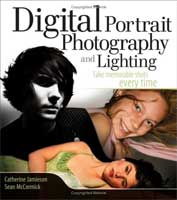“To take photographs means to recognize—simultaneously and within a fraction of a second—both the fact itself and the rigorous organization of visually perceived forms that give it meaning. It is putting one’s head, one’s eye and one’s heart on the same axis.” — Henri Cartier-Bresson
You’ve probably heard people say they make photographs. Maybe you thought nothing of it. But making a photograph is a distinctly different approach to photography than taking. Taking implies coming upon or discovering something, lying in wait, to grab or trap. When you take photos, you go into the world and you find scenes to capture. Making implies building a scene from parts. Creating something from nothing. Choosing which elements to include and which to exclude.
… Continue reading The difference between taking and making

 “A portrait is a likeness.”
“A portrait is a likeness.” 







